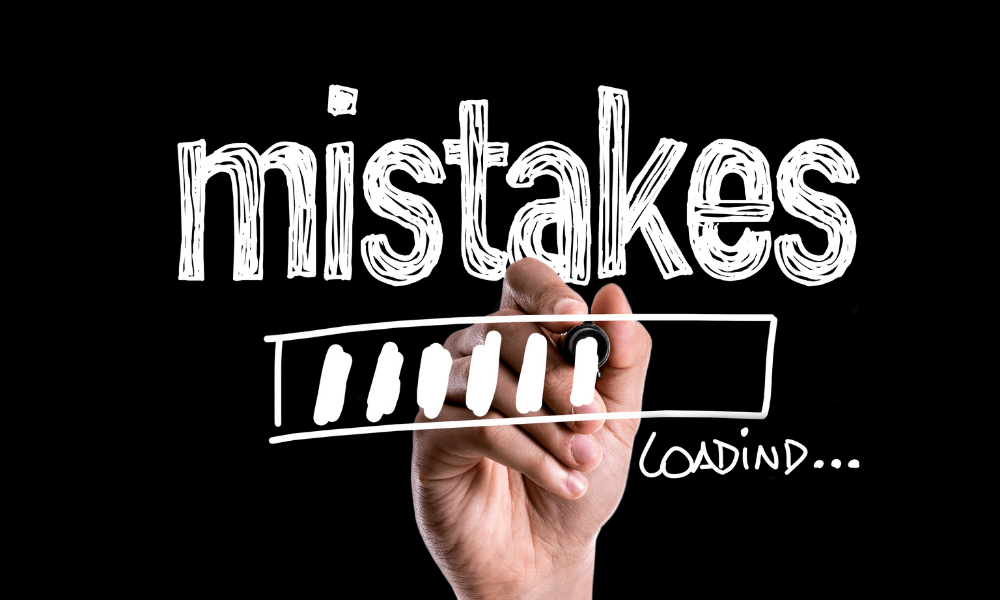Needless to say that the Foreign exchange market is probably the most accessible online day trading...

Needless to say that the Foreign exchange market is probably the most accessible online day trading market in the world with comparably fewer requirements and regulations.
At the same time, being the world's most liquid and volatile day trading market, Forex trading can often turn into a nightmare that has the ability to consume all your capital. So, watch out while you can!
Here are the 6 most common Forex trading mistakes that you want to avoid at any cost:
Losing continuously? Trading Isn't For You
There are two trading statistics to keep a close eye on Your win rate and risk-reward ratio.
Your win rate is how many trades you win, expressed as a percentage. For example, if you win 60 trades out of 100, your win rate is 60%.
A day trader should work to maintain a win rate above 50%. Your reward-risk ratio is how much you win relative to how much you lose on an average trade.
If your average losing trades are $50 and your winning trades are $75, your reward-risk ratio is $75/$50=1.5. A ratio of 1 indicates you're losing as much as you're winning.
Day traders should keep their reward risk above 1, and ideally above 1.25. You can still be profitable if your win rate is a bit lower and your reward risk is a bit higher, or vice versa.
Try to keep it simple though, and develop strategies that win more than 50% of the time and offer a better than 1.25 reward-risk ratio.
Not Using Stop-loss Orders
A stop-loss is an offsetting order that gets you out of a trade if the price moves against you by an amount you specify and you should always go with a stop-loss order.
When you have a stop-loss order on your trades, you have taken a large portion of the risk out of that investment. If you start taking losses on a trade, the stop-loss prevents you from losing more than you can handle.
Risking More Than You Can Afford
The key part of your risk management strategy is to establish how much of your capital you are willing to risk on each trade. Day traders ideally should risk less than 1% of their capital on any single trade.
That means that a stop-loss order closes out a trade if it results in no more than a 1% loss of trading capital. That means that even if you lose multiple trades in a row only a small amount of your capital will be lost.
At the same time, if you make more than 1% on each winning trade your losses are recouped.
Another aspect of risk management is controlling daily losses. Even risking only 1% per trade, you could lose a substantial amount of your capital on a single bad day.
You should set a percentage for the amount you are willing to lose in a day. If you can afford a 3% loss in a day, you should discipline yourself to stop at that point.
Day trading can become an addiction if you let it. Only play with the money you have set aside, and stick to your strategy.
Giving It All ( To Balance The Losses)
Even if you have a risk management strategy in place, there will be times you will be tempted to ignore it and take a much larger trade than you normally do. The reasons vary, and you'll be tempting fate to do her worst.
You might have had several losing trades in a row, which will make you want to earn back some of the losses. There will always be one trade promising such good returns, you are willing to risk almost everything on it.
If you risk too much you are making a mistake, and mistakes tend to compound. Traders have been known to their stop-loss order in the hopes of a turnaround.
Many also get caught up keeping their margin, telling themselves it will turn around and they'll win big. When you feel this way, stick to your 1% risk per trade rule and your 3% risk per day rule.
Rolling With The Wrong Broker
Depositing money with a Forex broker is the biggest trade you will make. If it is poorly managed, in financial trouble, or an outright trading scam, you could lose all your money.
Take time in choosing a broker. You should consider what you want to accomplish, what a broker offers, and use reliable sources for broker referrals. Then, test the broker using small trades at first, and don't accept offers of bonuses with their services.
Not Having A Proper Trading Plan
A trading plan is a written document that outlines your strategy. It defines how what, and when you will day trade. Your plan should include what markets you will trade, at what time, and what time frame you will use for analyzing and making trades.
Your plan should outline your risk management rules and should outline exactly how you will enter and exit trades for both winning and losing trades.
If you don't have a trading plan, you are taking unnecessary gambles. Create a trading plan and test it for profitability in a demo account or simulator before trying it with real money.
There you have it!